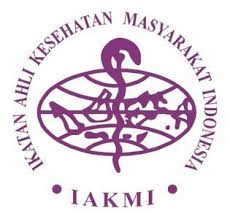FAKTOR RISIKO KEJADIAN DIABETES MELITUS DI WILAYAH PEDESAAN (ANALISIS DATA IFLS 4 DAN IFLS 5)
Abstract
Abstrak
Hasil riset kesehatan dasar tahun 2013 menunjukkan prevalensi diabetes melitus di wilayah pedesaan sebesar 1% dan mengalami kenaikan menjadi 1,01% pada hasil riset kesehatan dasar tahun 2018. Penelitian bertujuan untuk mengetahui faktor risiko kejadian diabetes melitus di wilayah pedesaan. Jenis penelitian yang digunakan adalah kuantitatif observasional dengan desain nested case control dimana responden dibagi menurut kelompok kasus dan kontrol pada IFLS gelombang ke-5 tahun 2014 kemudian diruntut paparanya di IFLS gelombang ke-4 tahun 2007. Hasil analisis bivariat menggunakan uji chi square menunjukkan tedapat hubungan yang signifikan antara jenis kelamin (p-value=0,047) keterpaparan asap rokok (p-value=0,009), obesitas (p-value<0,001), dan riwayat hipertensi (p-value=0,028) terhadap kejadian diabetes melitus di pedesaan. Tidak terdapat hubungan yang signifikan antara merokok (p-value=0,272) dan aktivitas fisik (p-value=0,772) dengan kejadian diabetes melitus di pedesaan. Hasil analisis multivariat menggunakan uji regresi logistik menunjukkan faktor risiko yang paling berpengaruh terhadap kejadian diabetes melitus di wilayah pedesaan adalah obesitas (p-value<0,001) dengan OR 2,710. Saran bagi Kementrerian Kesehatan Republik Indonesia untuk lebih meningkatkan screening diabetes melitus pada kelompok rentan di pedesaan yaitu kelompok dengan obesitas, mengalami keterpaparan asap rokok dan hipertensi.
Abstract
The results of basic health research in 2013 showed that the prevalence of diabetes mellitus in rural areas was 1% and had increased to 1.01% in the results of basic health research in 2018. The research aimed to determine the risk factors for developing diabetes mellitus in rural areas. The type of research used was quantitative observational with a nested case control design in which respondents were divided according to case and control groups at the 5th batch of 2014 IFLS and then followed up their exposure at the 4th batch of 2007 IFLS. The results of bivariate analysis using the chi square test showed that there was a relationship There was a significant difference between gender (p-value=0.047), exposure to cigarette smoke (p-value=0.009), obesity (p-value<0.001), and history of hypertension (p-value=0.028) on the incidence of diabetes mellitus in rural areas. There is no significant relationship between smoking (p-value=0.272) and physical activity (p-value=0.772) with the incidence of diabetes mellitus in rural areas. The results of multivariate analysis using logistic regression showed that the most influential risk factor for the incidence of diabetes mellitus in rural areas was obesity (p-value <0.001) with an OR of 2.710. Suggestions for the Ministry of Health of the Republic of Indonesia to further improve diabetes mellitus screening in vulnerable groups in rural areas, namely groups with obesity, exposure to cigarette smoke and hypertension.




